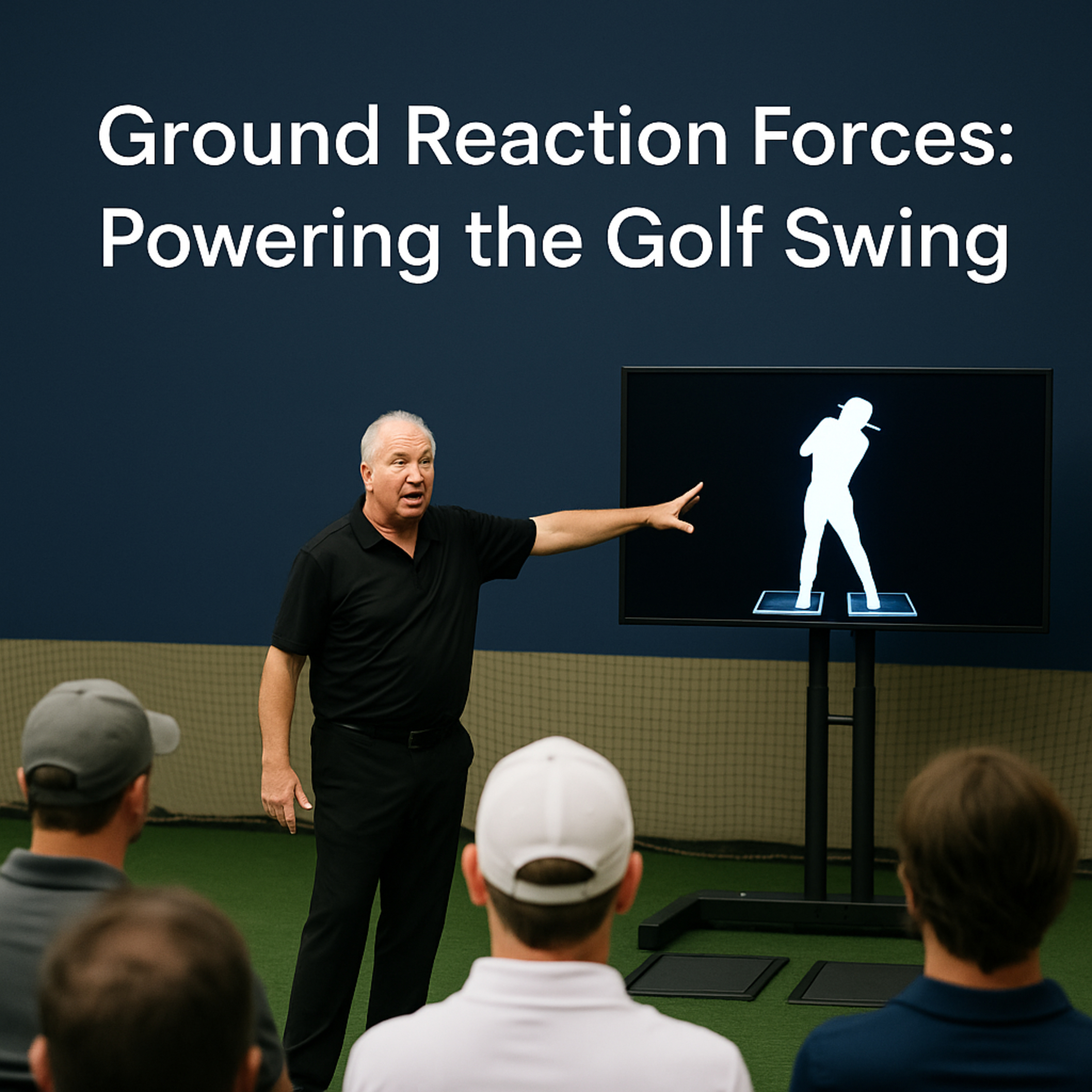#310 Ground Reaction Forces: Powering the Golf Swing
- Author
- Golf247.eu
- Published
- Sat 09 Aug 2025
- Episode Link
- https://podcasters.spotify.com/pod/show/puttin-pro/episodes/310-Ground-Reaction-Forces-Powering-the-Golf-Swing-e36h011
In the pursuit of distance and consistency, many golfers focus on upper-body mechanics while overlooking one of the game’s true power sources: the ground beneath their feet. Ground Reaction Forces (GRF) are the invisible but essential drivers of clubhead speed, and mastering them can transform a golfer’s performance.
At the heart of this concept is the understanding that power doesn’t come from simply shifting weight—it comes from applying force. That force is initiated from the ground up through a kinetic sequence: horizontal, rotational, and vertical. And crucially, these forces peak well before impact, not at it.
The Kinetic Sequence: Timing Is Everything
The kinetic sequence unfolds in three phases. First comes horizontal force, often referred to as lateral movement. Next is rotational force, where the body unwinds around the spine. Finally, vertical force—a push up from the ground—adds explosive speed. Each of these peaks between the top of the backswing and specific transitional points, not at the moment of impact. Golfers who wait too long miss the window for maximum energy transfer.
Pushing for Power
Creating GRF requires intent and precision. The body must push—force doesn’t appear passively. This starts with loading the inside of the trail foot and the ball of the lead foot. From here, the trail foot drives the belt buckle toward the lead side, while the lead foot pushes upward. This coordinated effort generates torque and lift—two key ingredients for speed.
Being on a flat foot eliminates leverage. Instead, golfers must position themselves over the balls of the feet, much like a sprinter in the starting blocks. This positioning enables forward and upward force and facilitates a natural arm drop during transition.
Body Mechanics and Ground Use
As this shift occurs, the legs and trail arm must extend. Straightening the trail leg and arm, along with the lead leg, multiplies force. It’s not just about strength—it's about sequencing and structure. Proper extension delivers more efficient energy to the ball.
Interestingly, the grip must respond to these dynamics. As rotation and vertical force increase, the lead hand grip must often strengthen to keep the clubface square. Without this adjustment, shots may leak right. Rather than slowing the lower body to regain control, smart coaching adapts the grip to preserve both power and accuracy.
One Size Does Not Fit All
Every golfer moves differently, and recognizing a player’s post type—rear, center, or front—is essential. Rear post players tend to move more laterally. Center post players blend rotation and vertical motion. Front post players stay more forward and produce vertical force earlier, often requiring a square trail foot for stability.
Understanding these tendencies informs how coaches guide pressure shifts, foot flare, and sequencing. A front post player, for example, may shift slightly right before pushing back left—completing their ground loading early in the swing.
Measure, Don’t Guess
None of this is guesswork—it must be measured. Even experienced coaches can’t reliably assess force patterns without technology. Force plates—particularly the new portable systems—reveal what the eye cannot: when and how pressure is applied. For any coach serious about biomechanics, having force plates “in the building” is no longer optional—it’s foundational.
Conclusion
Ground Reaction Forces are not abstract physics—they are practical tools for speed and control. When golfers understand how to load, push, and sequence movement through the ground, they unlock power that is both efficient and repeatable. The golf swing begins from the feet up. That’s where modern performance truly starts.
